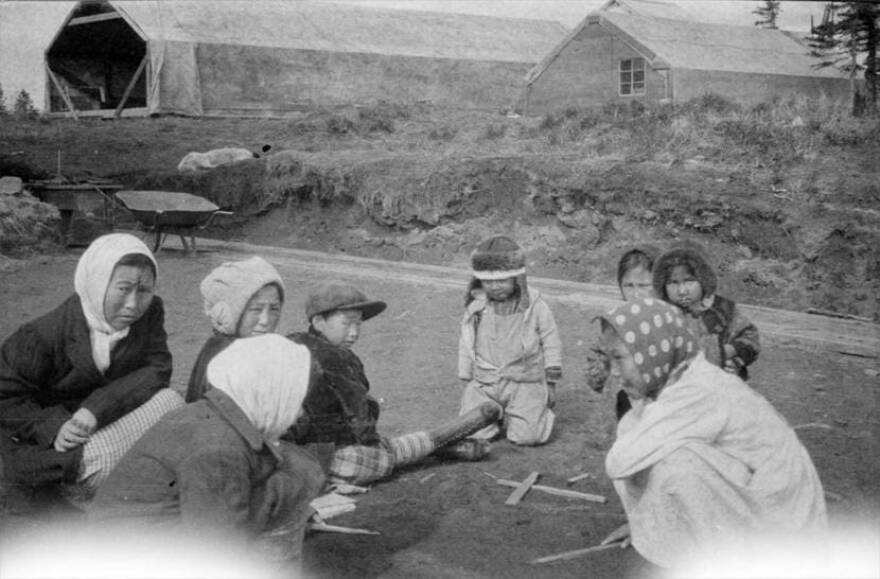It’s October 1918 in Juneau, and the future of Alaska depends on which comes first — winter or the so-called Spanish flu.
At that time the flu had already been ravaging the outside world, infecting one-third of the global population. It added to the tragic loss of human life in World War I, which was about to end. When it was all over, records show at least 50 million total deaths from the flu worldwide.
Get the latest coverage of the coronavirus in Alaska
Alaska Territorial Governor Thomas Riggs Jr. had read reports of Spanish flu infections and over 350 deaths in Seattle. He asked all steamship companies to inspect passengers for symptoms and to not allow any sick passengers on board.
But despite the community’s best efforts, the first influenza case in Alaska was reported in Juneau on Oct. 14, 1918 — before winter stopped ships from coming.
Niko Sanguinetti is a curator at the Juneau-Douglas City Museum.
“The main thing was that ships leaving Seattle, if they would do a visual inspection of everyone getting on the ship, and if they looked sick, then they would be told they couldn’t go,” said Sanguinetti. “Obviously the problem with that is that a lot of people didn’t show symptoms until they were already up here.”
Sanguinetti said there are many historical parallels between the influenza pandemic over a century ago and the coronavirus pandemic.
Articles from the Alaska Daily Empire (now called the Juneau Empire) paint a gloomy and eerily familiar picture of Juneau during the flu pandemic: stories of schools shutting down, businesses closing and mandatory self-quarantines.
“Some of these newspaper articles honestly could be printed two days ago. The same mentality, the same fears, the same concerns, the same uncertainties,” Sanguinetti said. “It’s very creepy.”
Haida Elder Tom Abel said his Aunt Carrie witnessed the flu pandemic firsthand as it spread through Southeast Alaska.
“She kind of described the situation to me, you know: ‘There’s people are dying so fast that they couldn’t bury them, and bodies are rotting in the streets and … were literally rotting where they dropped,’” said Abel.
Abel’s family survived in isolation, but going into 1919, whole villages in Alaska were decimated as the second wave of influenza traveled on ships and dog sleds up north.
“It made its way all the way up to the Seward Peninsula and ravaged northern Alaska and, you know, killing and devastating villages,” said Katie Ringsmuth, an Alaska historian at the University of Alaska Anchorage.
Ringsmuth’s family operated the Diamond Cannery in Bristol Bay. Today, as residents are talking about opening up fishing communities in Bristol Bay, fear of a second wave of COVID-19 is very real.
It was the second wave of the flu that hit Alaska the hardest. And for many Alaska Natives, it came with the history of colonization.
“This was a terrible, terrible disease that wiped out really the heart and soul of the population and left behind a population of orphans,” said Ringsmuth.
Historical documents show gruesome scenes. Cannery workers found orphans left to fend for themselves, surrounded by dogs and the remains of their relatives.
Overall, the flu killed a greater percentage of people in Alaska than in any other state or territory in the U.S. except for Samoa.
But Ringsmuth said the survival stories of those orphans in the face of a pandemic would inspire generations.
“Those courageous kids survived. And not only survived, they would go on to give birth to a generation that’s, you know, gonna lead Alaska into the (Alaska Native Claims Settlement Act) days and (Alaska National Interest Lands Conservation Act) and in subsistence and becoming some of the most powerful Indigenous people on the planet,” said Ringsmuth.
Stories that go to show that, in times of great tragedy, there are also extraordinary triumphs.






